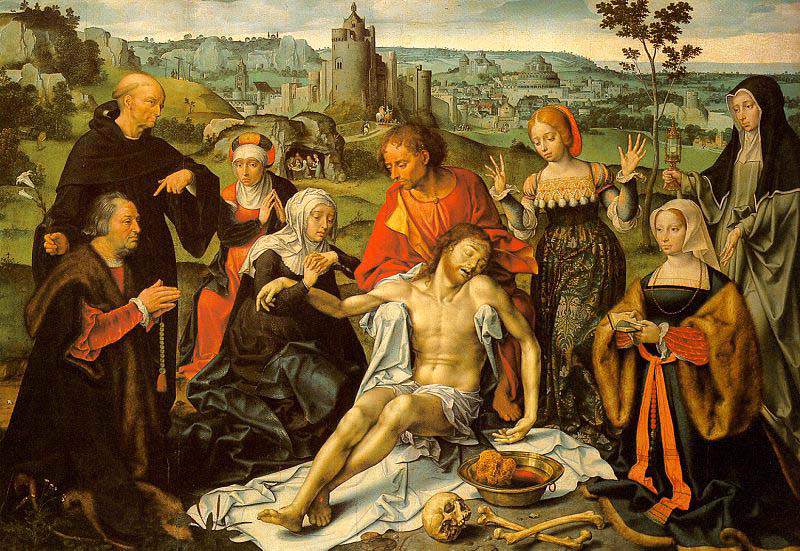Description
The Altarpiece of the Lamentation (centre) by artist Joos Van Cleve is an impressive work of art that has been the subject of admiration and study for centuries. This painting is a Flemish Renaissance masterpiece and is known for its detailed painting technique and its use of rich, vibrant colours.
The painting represents a religious scene with the figure of the dead Christ in the center and surrounded by the characters of the Virgin Mary, Saint John and other followers of Christ. The composition of the painting is impressive, with the figure of Christ in the center and the other figures arranged in a symmetrical pattern around him.
The use of color in the painting is one of its highlights. Deep gold and red tones are used to highlight the characters' outfits, while blue and green tones are used to create a calm and serene environment. The details in the painting are impressive, from the wrinkles in the clothes to the expressions on the faces of the characters.
The history of painting is fascinating. It was commissioned by the Brotherhood of Saint John in Antwerp in the 16th century and was placed in their chapel. During the French Revolution, the painting was confiscated and taken to Paris, where it was hung in the Louvre. However, after the fall of Napoleon, the painting was returned to Antwerp and placed back in its original chapel.
Despite its fame, there are little-known aspects of this painting. For example, Joos Van Cleve is believed to have used the technique of oil painting on panel, which enabled him to create a durable and durable work of art. Additionally, the artist is believed to have used live models to create the figures in the painting, allowing him to capture the life and emotion in each character.
In short, the Altarpiece of the Lamentation (center) by artist Joos Van Cleve is a stunning work of art that has stood the test of time. Its detailed painting technique, its use of vibrant colors, and its impressive composition make it a masterpiece of the Flemish Renaissance. Its fascinating history and little-known aspects make it even more interesting for lovers of art and history.

